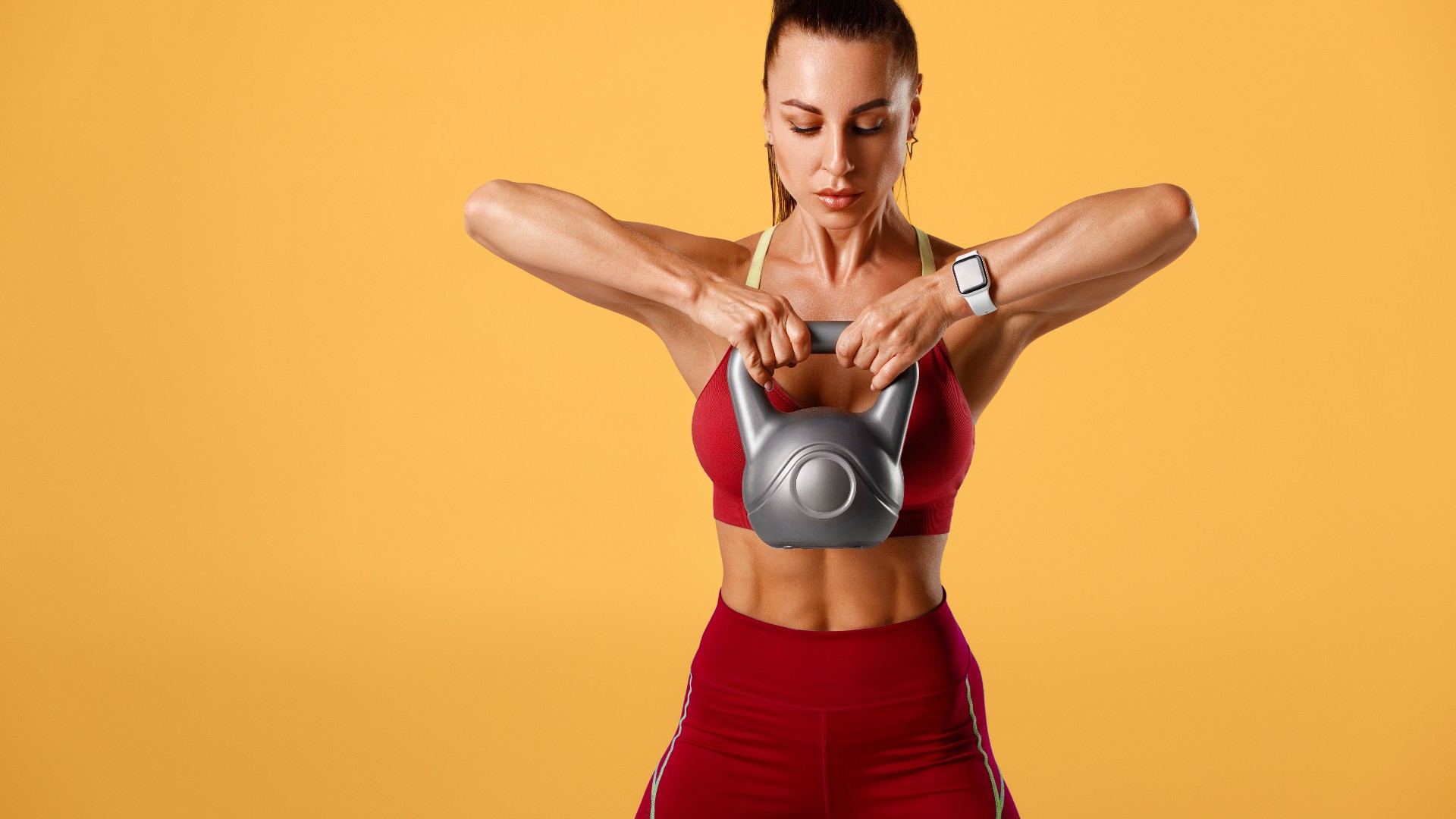
If you want to build stronger abs and target core muscles all over, add these seven kettlebell ab exercises into your workout regime. Kettlebells are an awesome strength and conditioning tool for hitting the major muscle groups, but they’re suitable for core workouts too.
I encourage clients to train with kettlebells wherever they can. Although you can pack on the most weight using barbells, these free weights have many benefits and allow you to isolate muscle groups. They take some getting used to, as they’re harder to control and grip than dumbbells, but the payoff is worth it.
These are seven of the best kettlebell exercises for abs and building a stronger core. Practicing with them will help target more of your core muscles, improve muscle mass and develop power. If you’re a beginner, also check out the 5 best kettlebell exercises for beginners, and read on for more.
Benefits of kettlebells for abs
Your core muscles are diverse, running down the front and back of the body, wrapping around your torso and extending from the ribs to the pelvis. The network even includes your glutes, diaphragm and hip flexor muscles. Together, the core muscles work hard to keep your torso stable, support various movements like flexion, extension and rotation and protect the lower back from injury.
With kettlebells, you can single or double load, which challenges your balance and stability and helps isolate one side of the body. You’ll also strengthen weaker muscles and improve core activation, coordination and power.
Plenty of studies support the perceived benefits of kettlebells. Research by the Journal of Human Kinetics found kettlebells are great additions to functional resistance programs to build neuromuscular power and recruit various muscles.
Time and time again, I see people lose efficiency on the bell by adopting uncomfortable and unsafe grips. So before you jump into the kettlebell exercises below, I recommend learning how to hold a kettlebell properly here.
Sign up to get the BEST of Tom's Guide direct to your inbox.
Get instant access to breaking news, the hottest reviews, great deals and helpful tips.
7 best kettlebell ab exercises for strengthening your core muscles
Here they are.
1. Kettlebell Turkish get-ups
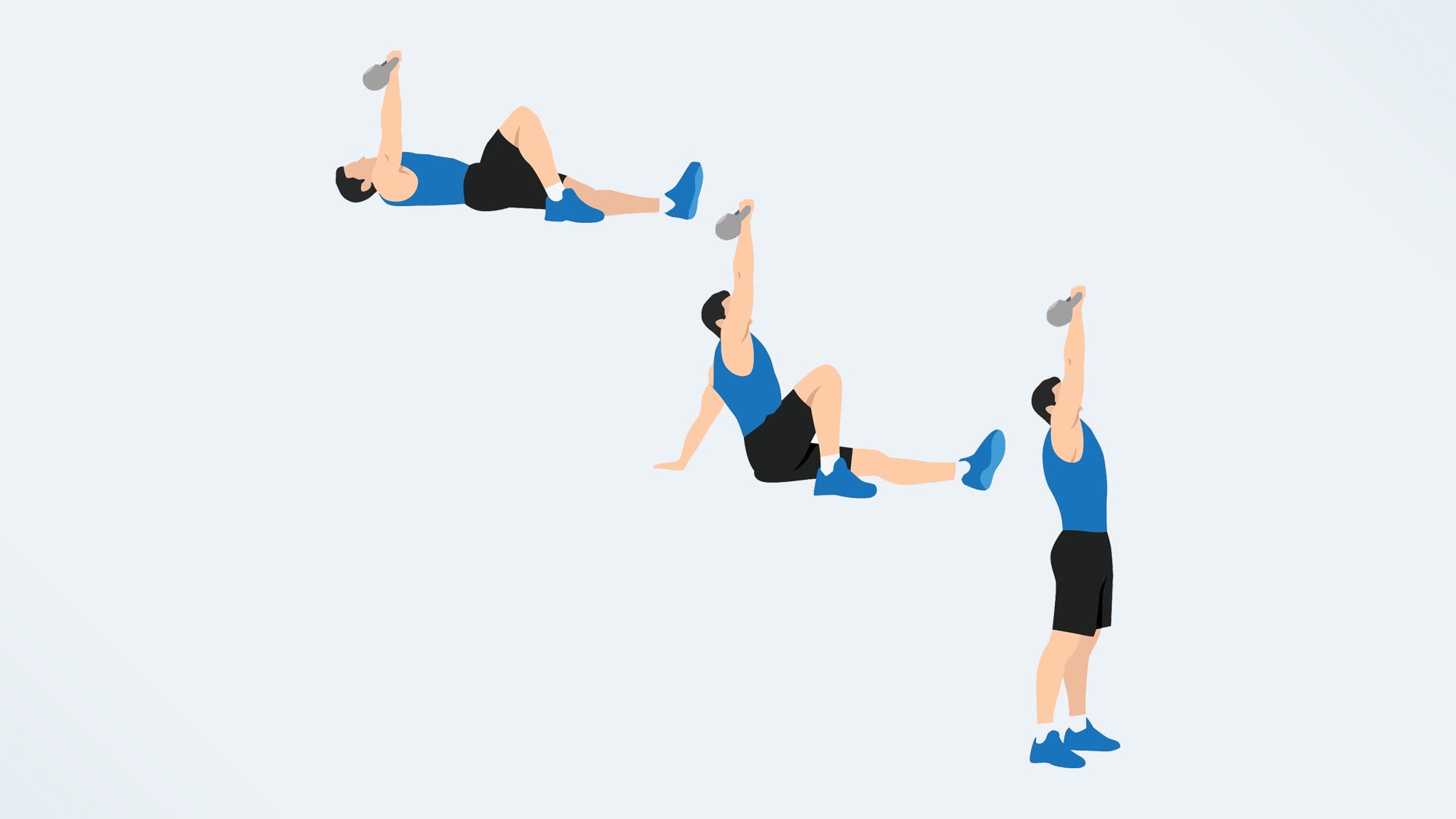
The move requires muscular stability, control and full-body engagement, recruiting muscles such as your shoulders, triceps, back, hip flexors, obliques, abs, quads, glutes, hamstrings and calves. Here’s how to do Turkish get-ups.
- Start on your back, gripping your weight in your right hand with an underhand grip
- Engage your core and extend your right arm overhead in line with your shoulder
- Bend your right knee and plant your right foot onto the ground. Extend your left leg away from you and keep your left arm beside your body
- Contract your upper body muscles and tuck your chin
- Sit up and rest your left elbow on the floor next to your body
- Keep the weight punching overhead and the arm locked out. Look at your weight at all times
- Push upwards again and transition from the left elbow to the left hand on the ground, arm now straight
- Push through your right heel and lift your hips upward
- Sweep your left leg behind you and place your left knee down under your hip into a half-kneeling position
- Lift your left arm and straighten your torso
- Keep your right arm locked overhead as you push through your front foot to stand, left leg meeting right hip-width apart
- Pause, then step your left leg back into a reverse lunge, knee resting on the ground
- Reverse each step back down. Switch sides.
2. Kettlebell Around the World

The ATW tests core control, strengthens the muscles responsible for posture and engages your upper body, including your shoulders, forearms and wrists. It also improves coordination, balance and stability, which could help you transition the skill into more technical lifts and complexes that require flow.
- Stand holding a kettlebell in one hand at one side of the handle
- Engage your core, draw your shoulders back and lengthen your spine
- Tuck your pelvis slightly, keep a soft bend in your knees, then send the kettlebell around your body using a circular motion with straight arms
- As the kettlebell passes in front of you, catch it in the other hand and pass it back behind your body
- Try to move at a controlled and flowing pace without overleaning or touching your body. Change directions throughout.
3. Kettlebell farmer’s walk
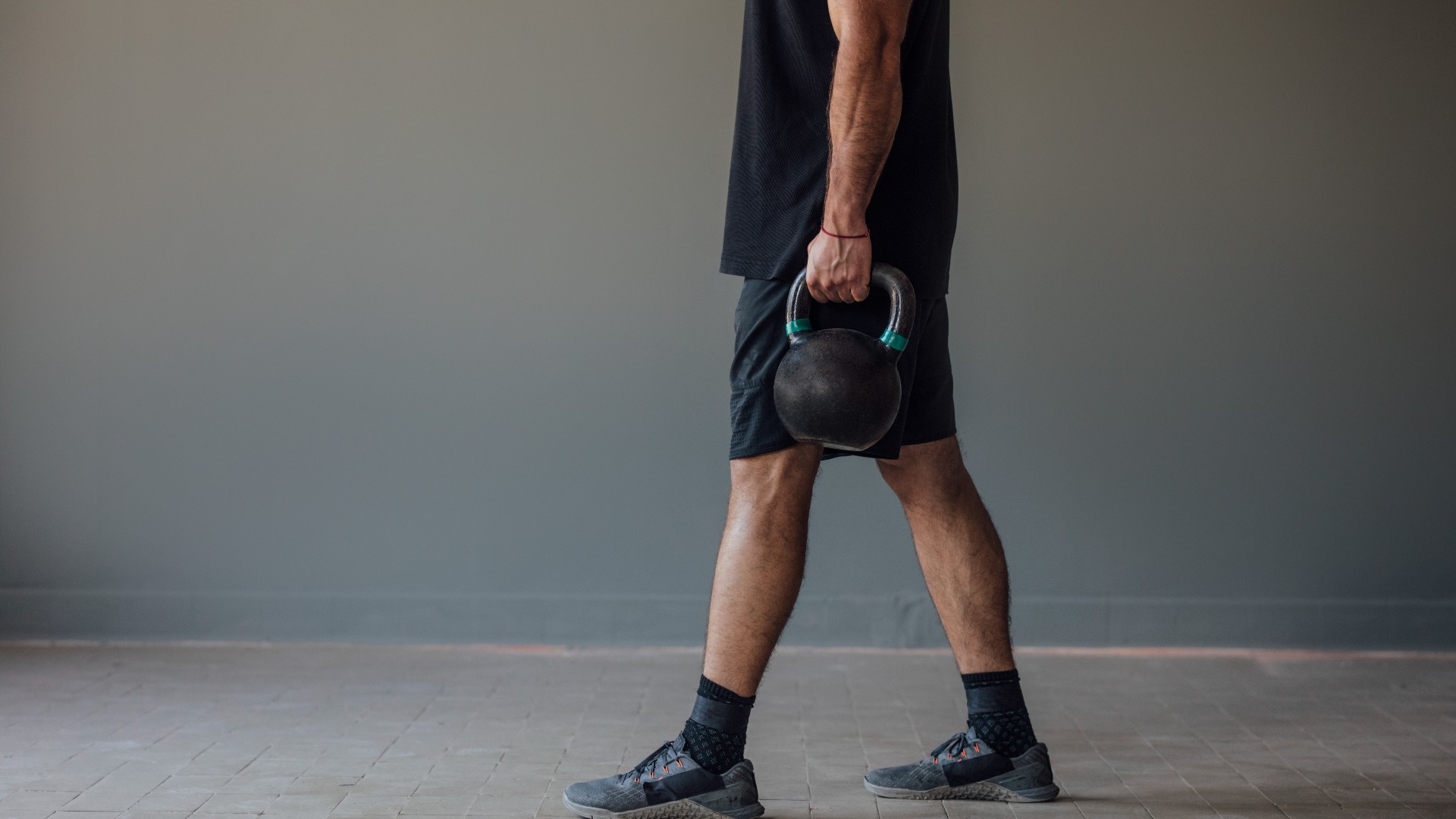
The move makes it into every best exercise round-up we have. That’s because it’s a superb full-body exercise that trains and targets a bunch of muscles, including your legs, glutes, lower back, shoulders and forearms. Here’s how to do the farmer’s walk.
Avoid leaning backward or favoring one side. You could use one or two weights depending on your ability.
- Stand feet hip-width apart with two kettlebells placed on either side of your feet
- Bend your knees and squat down with your chest proud and weight evenly distributed across your feet
- Grip both kettlebells, brace your core and set your shoulders back and down
- Look forward and push the ground away to stand, then begin walking.
4. Kettlebell overhead sit-up
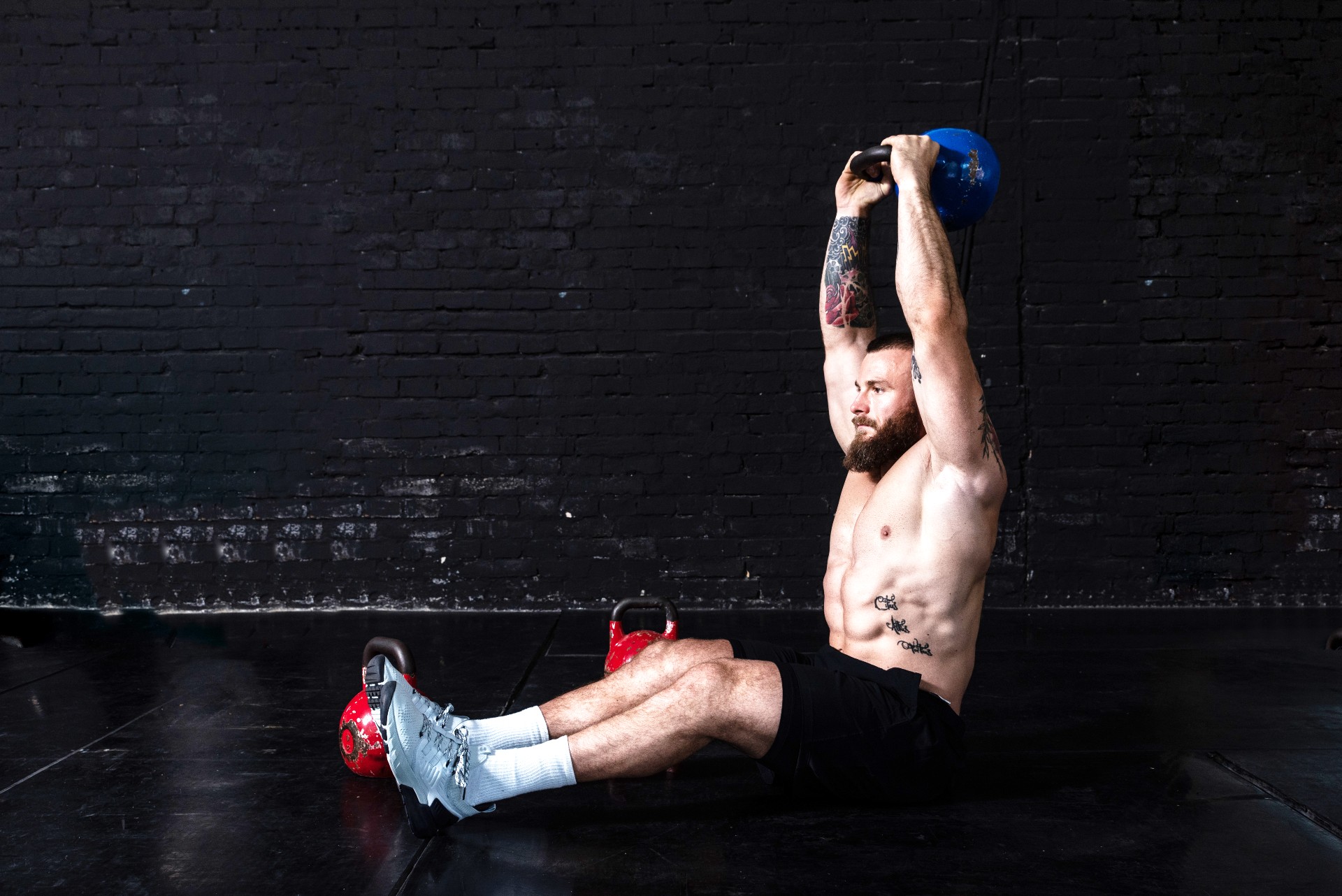
While activating your lower back, abs and hip flexor muscles, your arms and shoulders also work hard to keep the weight stable overhead. You could hold one or two kettlebells, depending on your ability.
- Start on your back with legs extended in front of you
- Hold a kettlebell in your left hand using an underhand grip
- Extend your left arm behind your head
- Engage your core, then perform a sit-up, keeping your arm extended overhead in line with your shoulder
- Slowly lower back down to the ground with control. Switch sides.
- You could also practice holding one heavy kettlebell in both hands (see above).
5. Alternating kettlebell swings
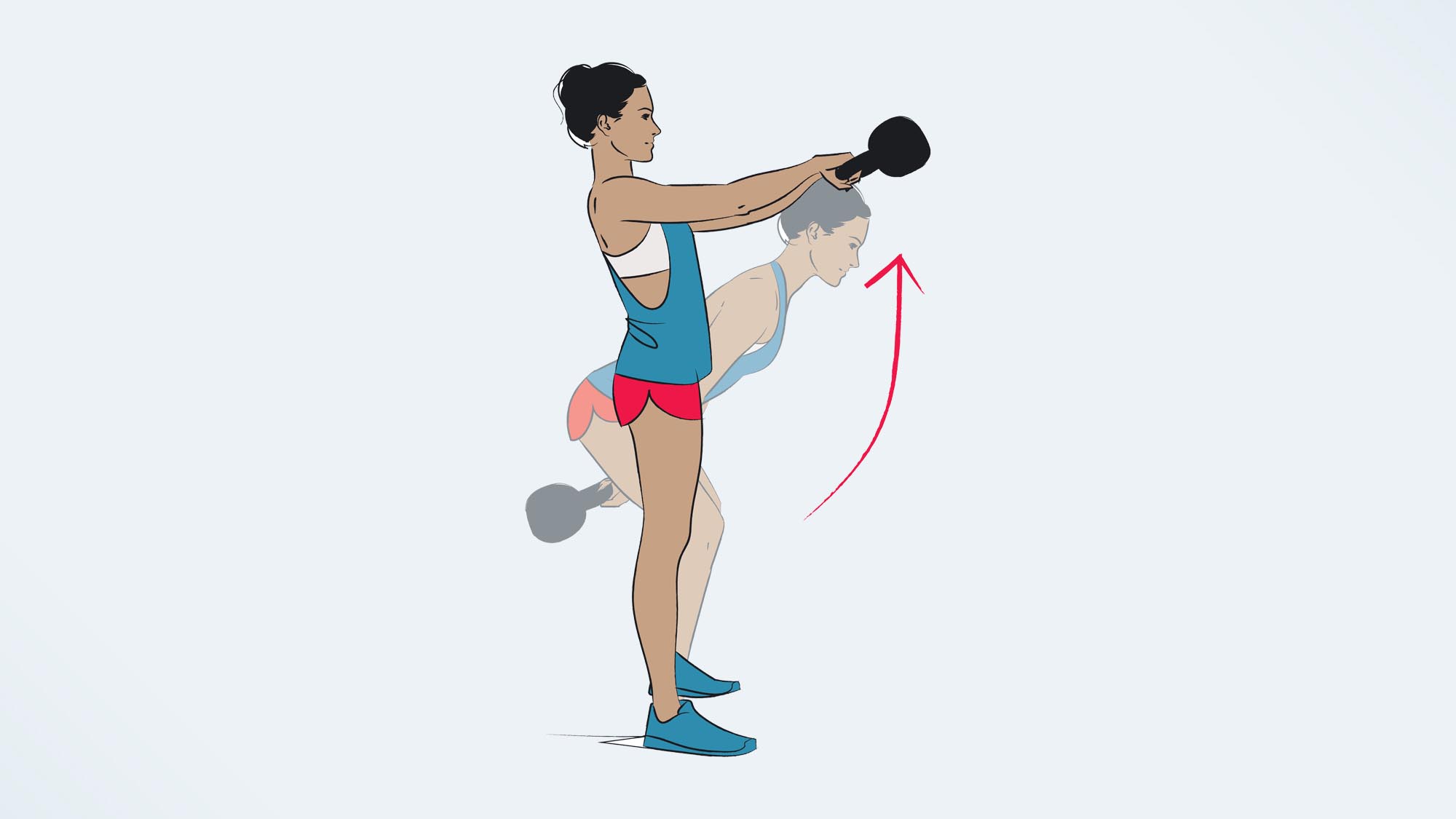
Swings strengthen the muscles along the posterior chain, including your back, glutes and hamstrings, and swinging the weight above your head — American kettlebell swings — increases shoulder activation and core control. Alternating also tests balance and stability, working core muscles harder. Avoid squatting or bending your arms.
Learn more about how to do kettlebell swings.
- Stand with feet shoulder-width apart (or slightly wider), toes pointed 45 degrees outwards, and grip your kettlebell in one hand
- Keep a soft knee bend and set your shoulders back and down
- Brace your core. Hinge forward at your hips and send your bum back while keeping a flat back
- Swing the kettlebell between your legs, then explosively drive it upwards to shoulder height, thrusting with your hips and squeezing your glutes
- Exchange the kettlebell into your other hand at the top, then control the descent back down.
6. Kettlebell renegade row
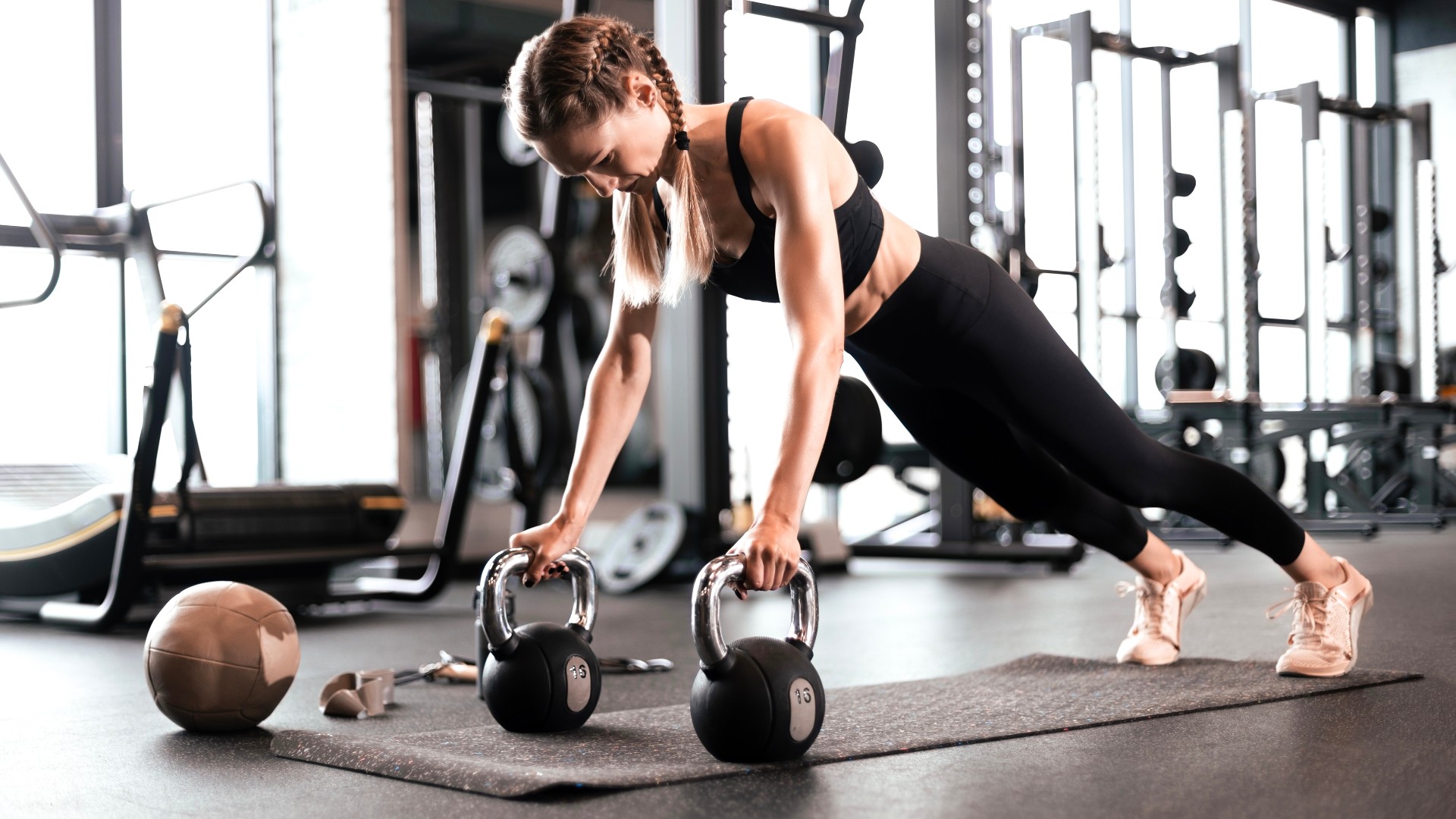
Hit most of the muscles in your upper body, including your back, biceps and deep stabilization muscles in your core, as you try and hold your body in a plank position using the unstable base of kettlebells. One fitness writer did 40 renegade rows a day for a week — here’s what happened.
Squeeze your abs and glutes to prevent the hips from dropping low. The hard work comes from anti-rotation as your body attempts to turn outwards as you lift your arm.
- Start in a plank position gripping a kettlebell in each hand
- Engage your core, then row one arm back until your elbow is slightly higher than your torso, then slowly lower it back down to the ground and switch sides
- Keep your hips square without twisting them and in line with your shoulders
- Drop your knees down if you prefer.
7. Kettlebell plank pull-through
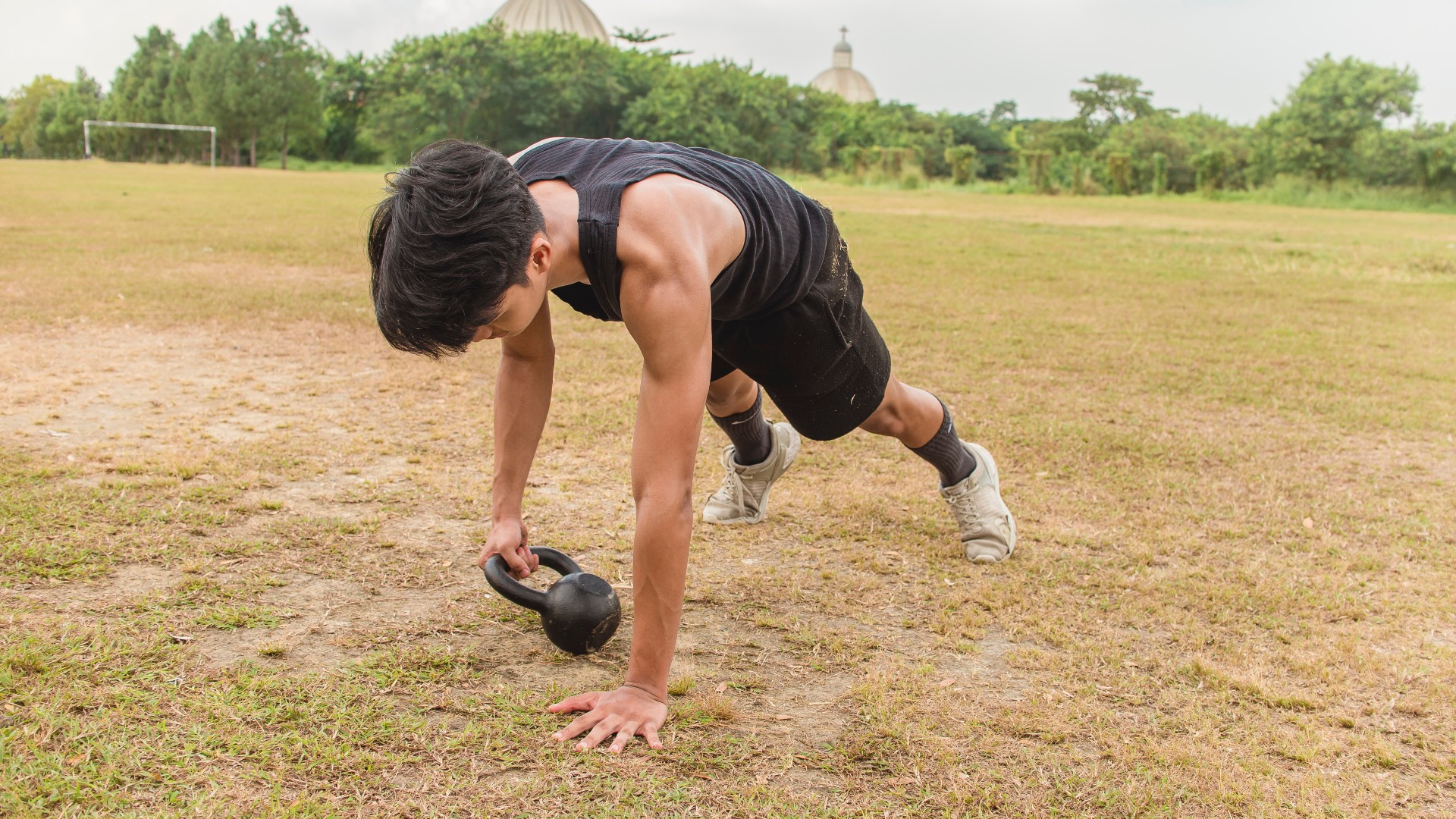
The plank pull-through hits your major core muscles, arms and shoulders, back, biceps and glutes. Stabilizer muscles work to prevent rotation as you perform the side-to-side drag. In short, It's a certified core-torcher.
Avoid swinging or dropping your hips, and use your knees if necessary. Try dragging the weight side-to-side if you prefer.
- Start in a high plank position with a kettlebell to your left side behind your hand
- Grip the kettlebell with your right hand, then lift the kettlebell up and over to the other side of your body
- Replace your right hand on the floor, then repeat with your left hand, lifting and placing the weight back to the starting position.
If these don't hit the spot, check out more TG-approved ideas below.
More from Tom's Guide
Here are more ways to torch core muscles and test your kettlebell skills.
- Our writer did 100 kettlebell swings a day and here's what happened
- I tried this 30-day kettlebell challenge. and the results were surprising
- Here are our best ab workouts for any level
- Try this 3-move kettlebell abs workout to build and sculpt core muscles

Sam Hopes is a level 3 qualified trainer, level 2 reiki practitioner and senior fitness writer at Tom's Guide. She is also currently undertaking her Yoga For Athletes training course. Sam has written for various fitness brands and websites over the years and has experience across brands at Future such as Live Science, Fit&Well, Coach, and T3.
Having worked with fitness studios like F45 and Virgin Active, Sam now primarily teaches outdoor bootcamps, bodyweight, calisthenics and kettlebells. She also coaches mobility and stretching-focused classes several times a week and believes that true strength comes from a holistic approach to training your body.
Sam has completed two mixed doubles Hyrox competitions in London and the Netherlands and finished her first doubles attempt in 1:11.
